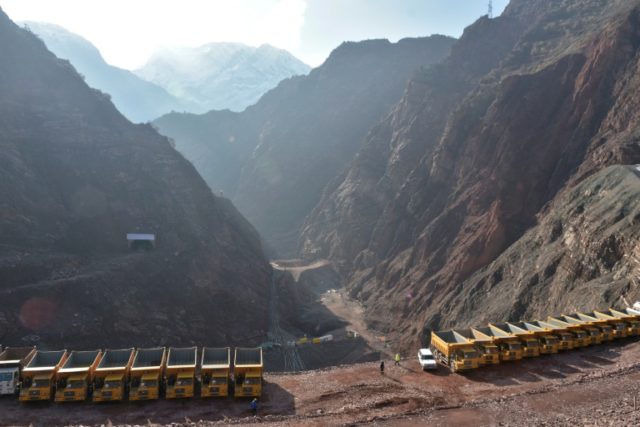Rogun (Tajikistan) (AFP) – Tajik President Emomali Rakhmon on Friday inaugurated what is expected to be the world’s tallest hydro-electric power plant, a $3.9 billion project that will turn the impoverished country into a key power producer in Central Asia.
In a colourful ceremony deep in the Pamir mountains, the Tajik leader pushed a large symbolic button to applause from the audience to mark the first of six turbines in the Rogun hydroelectric dam going online.
Men in hard hats danced to songs about the dam and waved national flags.
“Rogun is light, Rogun is glory!” went one of the songs.
The power plant is expected to reach capacity of 3,600 megawatts — the equivalent of three nuclear power plants — when it is completed in a decade.
The power plant will double energy production in the country of nearly nine million people, alleviating a long-lasting, debilitating national energy deficit. Surplus energy will be sold to neighbours such as Afghanistan, Pakistan and Uzbekistan.
Built on the Vakhsh River in southern Tajikistan, the plant is expected to reach a height of 335 metres (1,099 feet) when completed, becoming the world’s tallest hydro-electric dam.
Today, Rogun — overseen by the Italian company Salini Impregilo — is still a vast construction site, with rocky earth covering the territory from which the powerful Vakhsh was diverted.
In 2016, Rakhmon, a former collective farm boss, climbed into a bulldozer at a groundbreaking for the dam, in a sign of the president’s personal attachment to the scheme.
Plans to build a dam in southern Tajikistan date back to the Soviet era, but the project was scaled up in recent years.
In 2017, Tajikistan raised $500 million from an inaugural international bond to help finance the construction.
Authorities hope that when the project gains momentum it will generate money to finance further construction.
Before the ceremony, Rakhmon discussed the construction of the plant with Cyril Muller, World Bank vice president for Europe and Central Asia.
– ‘National consolidation’ –
Observers say the project is hugely significant for a country that lost tens of thousands of people in a civil war in the 1990s when rebel groups, including Islamists, rose up against the government.
Rogun has become “a concept for national consolidation”, political analyst Abdugani Mamadazimov told AFP.
There have been calls by public figures to rename the dam after Rakhmon.
Saidjafar Usmonzoda, chairman of the Democratic Party of Tajikistan which is represented in parliament, told AFP such a tribute would only be fitting given Rakhmon’s “heroic accomplishment” making Rogun a reality.
If it reaches the planned height of 335 metres, the dam will be 30 metres taller than the recently-built Jinping-I Dam in China and 35 metres taller than Tajikistan’s own Soviet-era Nurek dam, also on the Vakhsh River.
The project has a number of risks.
Observers warn that the Tajik authorities do not appear to concern themselves with the environmental sensitivities of Rogun.
It is located “in a highly seismic area, and several geological studies have warned about the risks of building such a large dam in this setting,” Filippo Menga, a lecturer in human geography at the University of Reading in the United Kingdom, told AFP.
Geopolitical tensions surrounding the project have, for the moment, subsided in a region that suffers from water scarcity.
Uzbekistan’s late leader Islam Karimov once hinted that his downstream agriculture-dependent country might go to war over Rogun and a similar project in neighbouring Kyrgyzstan.
But Uzbek opposition to the dam has evaporated since Karimov’s death in 2016.
Representatives of Uzbekistan’s state energy company Uzbekenergo attended the inauguration and the country of 32 million people could one day become a client.

COMMENTS
Please let us know if you're having issues with commenting.